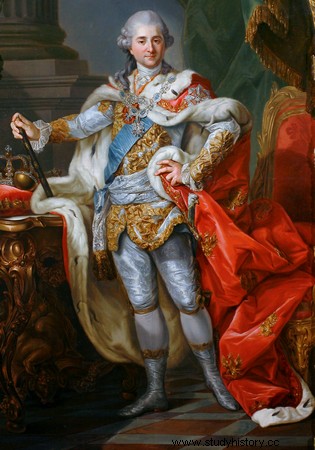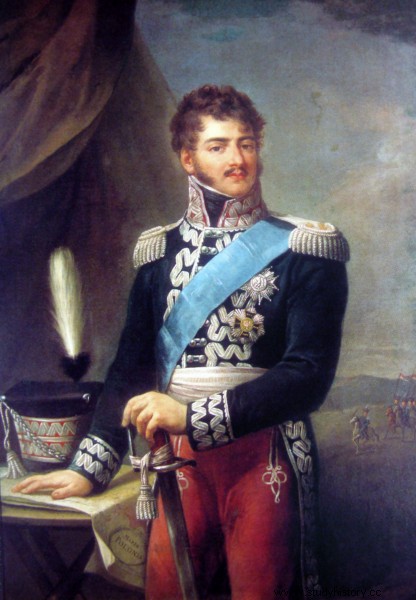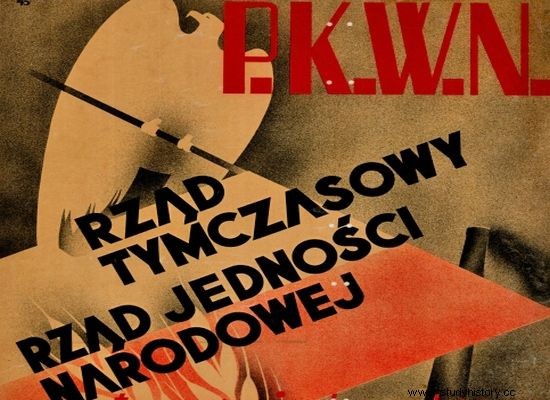Entertainment of monarchs. Passion of people of power. The driving force of Polish politics. Freemasonry for centuries influenced the fate of the Republic of Poland - for good and for bad.
Polish freemasons did not start modestly. From the very beginning, freemasonry was the entertainment of kings on the Vistula. He would not have been there if it had not been for a certain illegitimate son of the most debauched ruler of the Republic of Poland, Augustus II the Strong.
Count Fryderyk August Rutowski, because we are talking about him, founded a pioneering lodge in Dresden. The year was 1738. Just 21 years after the installation of the first Grand Lodge of London. The organization created by the Polish-Saxon aristocrat was almost a peer of the German, Italian, Swiss and Scottish freemasons. Only a few years later were Masonic Lodges established in Sweden and Denmark.
Bishop a Freemason? Why not
Freemasonry took the hearts of the Polish aristocracy and the royal court by storm. Augustus III Sas, stepbrother of Count Rutowski, has not yet decided to become a Mason. His successor, however, had no objection to that anymore.

Mason was, among others the last Polish king, Stanisław August Poniatowski.
Stanisław August Poniatowski joined the Warsaw lodge "Under the Three Helmets" in 1777. He became the "Knight of the Rose of the Cross" in the seventh, highest Masonic rank. For this he paid a symbolic fee of 76 1/2 ducats. He did not hide his membership in a secret organization:documents meticulously recording his accession to the lodge were preserved.
Within the walls of the castle, Poniatowski was still Poniatowski. In the lodge, however, he took a completely new monastic name: Salsinatus eques a Corona vindicata .
Almost the entire court followed in the footsteps of the monarch. Primate Gabriel Podoski not only willingly agreed to become a Freemason, but also borrowed his silverware for a Masonic ceremony presided over by the king. He was not even bothered by the papal ban in his membership of the lodge. She was threatened with excommunication.

As much as 20% of the deputies taking part in the deliberations of the Four-Year Seym belonged to the freemasons.
Masons. We owe them the Constitution of May 3
From the beginning of the activity of freemasonry in Poland, its representatives dominated at the top of the power. The period from the establishment of the first lodge to the Third Partition of Poland was a period of real prosperity for Freemasonry. Contrary to the myths, the secret lodges did not try to destroy the state from the inside. On the contrary. It was the freemasons who set the tone for the deliberations of the Four-Year Seym. They accounted for over 20% of the Members.
Kazimierz Nestor Sapieha and Jan Łuszczewski were Freemasons. Stanisław Małachowski himself submitted a request for initiation in the order. Finally, every third of the 83 MPs supporting the adoption of the May 3rd Constitution was a freemason. It is to them that we owe the second modern constitution in the world.
In the Napoleonic era, the spirit of Freemasonry was enlivened by legions. General Henryk Dąbrowski and Fr. Józef Poniatowski. Then Stanisław Potocki becomes the Grand Master.

The king's nephew, Prince Józef Poniatowski, also belonged to the Masonic Lodge.
The Masonic movement did not disappear even after independence was regained. In the interwar period, it numbered several hundred people throughout the country. The writer Maria Dąbrowska worked in this circle. It defended the "secular order" as a bastion of civic virtue and human righteousness. The Polish Socialist Party did not prevent its members from sitting in the boxes at that time.
Freemasons were, among others Andrzej Strug, Stanisław Posner, Oskar Lange, Jerzy Szapiro, Mieczysław Niedzialkowski, Władysław Kunicki. However, there were voices of opposition. Critics argued that Freemasonry hunts down influential people, instills solidarity with the order in them, and thus weaves its web of influence. And indeed - she hunted. Jan Piłsudski, the Marshal's brother, belonged to the freemasons. President Gabriel Narutowicz was also a Freemason.
Masons. Builders of People's Poland
After the war, many freemasons found themselves in the new reality. At that time, the communist authorities operated in paranoid fear of the enemy. Freemasonry was feared as an internal enemy. Meanwhile, the freemasons remaining in the country after the war were often actively building socialism.

Also during the so-called Polish People's Republic, freemasonry tried to be actively involved in political life.
More than 40% of the brothers occupied high positions in the state administration. One in three became a lecturer at a university. Almost 10% have reached the highest offices in the cooperative movement. Henryk Kołodziejski became the symbol of this period. He co-founded the Provisional Government of National Unity and became a member of the National National Council. He was also the president of the Supreme Chamber of Control and a member of the State Council.
The breakthrough of 1989 brought a renaissance of Freemasonry in Poland. Former lodges were reactivated. It was there that the shape of the new constitution was discussed. The freemasons then held the highest state positions and held influential offices. A telling example is Jan Olszewski, prime minister in 1991–1992.

Currently, freemasonry in Poland has several hundred members. It includes people of politics, business and culture.
Currently, Polish Freemasonry has several hundred members - no less than in the Second Polish Republic, although only a fraction of its cadres from the times of King Stas. The richest and most influential people sit in Masonic Lodges. Scientists, financiers, politicians are among the ranks of Freemasonry.
Officially, the freemasons are not a political association. They refrain from any suggestions that they are trying to influence the authorities. And maybe it's a pity. Because if history teaches anything - it is that Freemasonry has brought Poles much more success than it has led to defeats.
***
If you are interested in the subject of freemasonry in Poland, it is worth visiting the exhibition "Masonry. Pro publico bono ” which can be viewed until January 11, 2015 at the National Museum in Warsaw.
